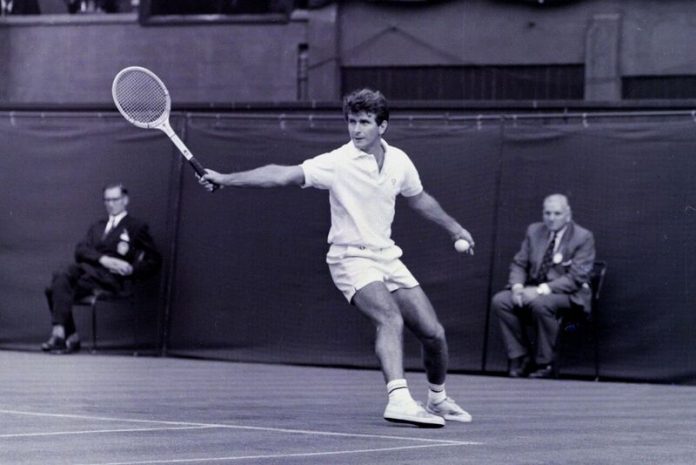Bill Simons
Every time you watch a big match it seems Serena’s and Venus’ mother Oracene Price is looking on. But guess what: There’s someone else, someone you’ve never heard of, who’s watched more live, big-time tennis over the last seven decades than anyone.
Meet Marty Mulligan, who for about 200 Slams has been court side, a part of the fiber of the game. Mulligan began his career playing for his native Australia, became a top five player, and in 1962, famously came within one match point in Paris of derailing Rod Laver‘s run to the Grand Slam. A Wimbledon finalist, he played Davis Cup for Italy and coached their Davis Cup team for a decade.
But he is best known for long being Fila’s loyal player representative. In back corridors of tourneys or up in the Friends’ Box, in the players lounge or out on the back courts, Marty has been tennis’ quiet, kind uncle – knowing and wise. He’s overseen the sometime tumultuous careers of everyone from Bjorn Borg and Jennifer Capriati to Kim Clijsters and John Isner. Long a resident of Foster City, in July he will be inducted into the Northern California Tennis Hall of Fame.
A talk with the seen-it-all sage yields a mother lode of observations. Who else on the scene could give you tips on beating Laver: “Work the ball, put pressure on him, don’t make stupid shots.” Marty’s sweetest personal moments were receiving trophies from royalty – Princess Grace and King Gustav. His favorite moments as an observer were watching Borg winning the French Open and Wimbledon back-to-back, 17-year-old Boris Becker capturing Wimbledon, and Clijsters coming back to score her shock win at the 2009 US Open. “She was so willing to make everyone happy,” Marty says with a twinkle and the slightest of accents.
A world traveler, his favorite venue is Monte Carlo. If he could change tennis, he’d reform the schedule and have all tournaments be like Indian Wells, where Hawk-Eye is on every court,” so it’s fair to all players.”
On the one hand, Marty claims, the game hasn’t changed. In his day, amateurs were paid under the table. Now there are quiet appearance payments to the game’s top stars.
Still, he says, you can’t really compare today’s game to when tennis was played with wooden rackets. “They were different eras. You give Federer a wooden racket and see how he plays, or give Laver the racket that Federer plays with and see how he plays. Laver was definitely the best player in the wooden racket era. Today Federer has the best record, but maybe Djokovic and Nadal can pass him.” As for the women, Marty says, “Graf was good – and nobody hits the ball as hard as Serena…[but] look, Margaret Court won 62 Grand Slams. She’s forgotten in the US because she made some inappropriate comments – she’s ostracized.”
Marty is loyal to yesterday’s forgotten stars, who he says should get more respect. “They were just as fit as today’s stars, but not as strong,” he notes. When asked about the great strokes he’s seen, he conjures up images of Ken Rosewall‘s backhand and the serves of Neal Fraser and Mike Sangster.
Long a talent scout, Mulligan claims that these days, “Europeans are much tougher. They see the financial reward.” As for discovering future stars, he says you have to look for “a kid who shows you something special over a period of time.”
Gee, that sounds like someone tennis has long loved – Marty Mulligan.



















